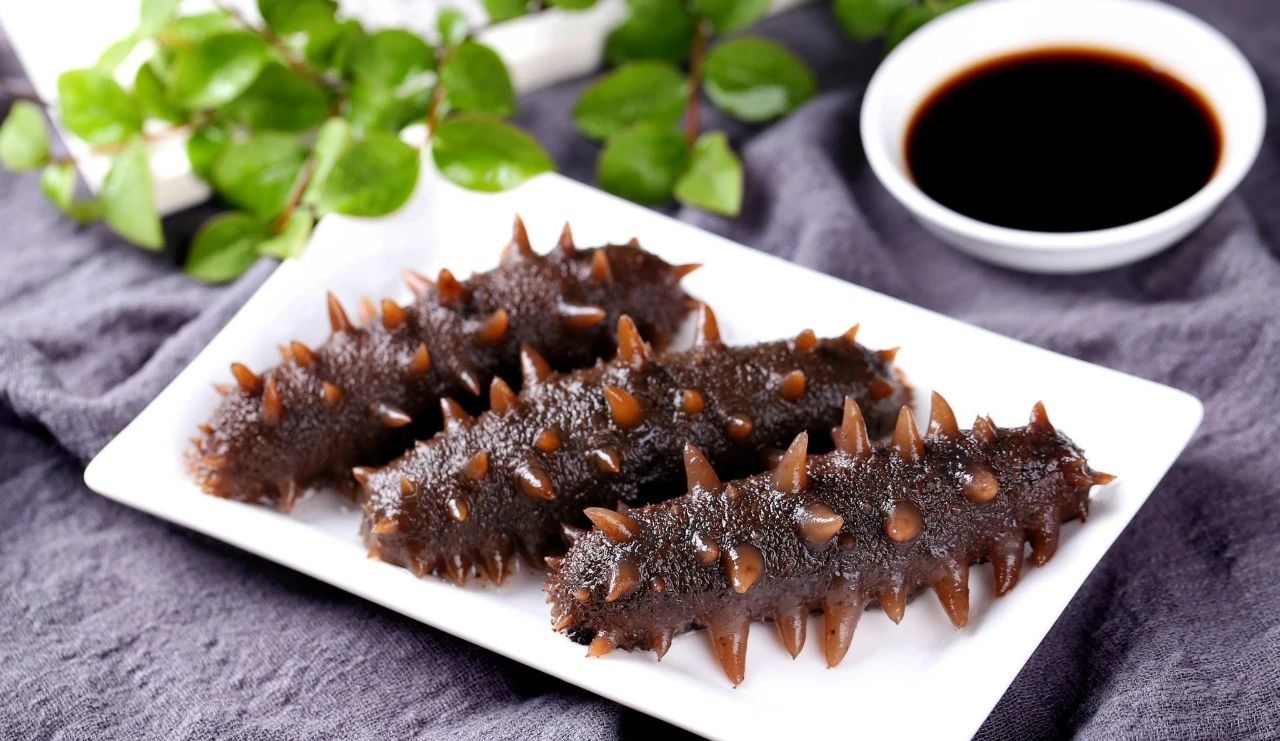Comprehensive Guide to Sea Cucumber Import Procedures
Issue Date:2025-02-21 Source:Huangpu Customs 12360
Sea cucumbers, long revered as "marine ginseng", contain essential nutrients including taurine, chondroitin sulfate, zinc (Zn), selenium (Se), vitamin B1, niacin, and over 50 other beneficial components. This low-cholesterol, low-fat, high-protein marine delicacy offers exceptional nutritional value. In recent years, sea cucumbers have gained increasing popularity, driving growing demand for imported varieties.

Import Clearance Procedures for Sea Cucumbers
I. Common Varieties and HS Codes for Sea Cucumber Imports
1. Frozen sea cucumbers (Stichopus japonicus, Holothuroidea): 0308120090
2. Other processed/preserved sea cucumbers: 1605610090
3. Dried, salted, or brined sea cucumbers (Stichopus japonicus, Holothuroidea), including smoked varieties (whether pre-cooked or cooked during smoking): 0308190090
II. Import Eligibility Requirements
Permitted source countries and approved varieties are listed in the Catalogue of Food Exported to China from Countries or Regions that Comply with Assessment and Review Requirements or Have Traditional Trading Relationships with China (http://43.248.49.223/). The General Administration of Customs maintains dynamic updates to the Catalogue.
III. Requirements for Overseas Production Enterprises
Overseas production, processing and storage facilities exporting to China (including freezer-equipped fishing vessels, transport vessels and processing vessels) must be recommended for registration with the General Administration of Customs by the competent authority of their country/region of origin, and may only export to China upon successful registration.
The list of registered overseas enterprises can be accessed via the "Registration Management System of Overseas Manufacturers of Imported Food" (https://ciferquery.singlewindow.cn/).
IV. Requirements for Import and Export Enterprises
1. Overseas exporters/agents and domestic importers must submit registration applications through the International Trade "Single Window" or "Online + Customs" portal (http://online.customs.gov.cn/). Registration status can be verified under the "List of Accredited Administrative Counterparts" section on the Credit Publicity Platform of Import and Export Business of Customs of the People's Republic of China (http://credit.customs.gov.cn/).
2. Importers shall establish a food import and sales documentation system, maintaining relevant records for no less than 6 months after product expiration; where no definite shelf life exists, records shall be retained for at least 2 years post-sale.
3. Importers shall implement a vetting mechanism for overseas exporters and manufacturingfacilities.
V. Requirements for Entry Declaration
1. Commercial invoice, trade contract, shipping documents (bill of lading/waybill), certificate of origin (where applicable), official inspection and quarantine documentation from exporting authorities, and the Entry Animal and Plant Quarantine License.
2. Food importers or their agents shall submit truthful declarations to customs authorities in accordance with legal provisions, accompanied by officially recognized inspection and quarantine certificates from exporting countries/regions as validated by the General Administration of Customs. Inspection and quarantine certificates must bear the official seal of the exporting country/region's competent authority and signature of an accredited veterinarian, with explicit designation of the People's Republic of China as final destination.
3. Entities requiring entry quarantine clearance must obtain the Entry Animal and Plant Quarantine License prior to executing trade contracts or agreements.
4. The imported products (HS code and CIQ code) declared shall correspond to those specified for export to China during the registration of overseas food production enterprises.
VI. On-site Inspection
Customs authorities shall conduct on-site inspections of imported sea cucumbers as required for regulatory compliance, including but not limited to the following aspects:
(I) Verification of whether transportation vehicles and storage facilities meet sanitary and safety standards;
(II) Consistency check between container numbers, seal identifiers, labeling on inner/outer packaging, physical goods status, and the declared information with accompanying documentation;
(III) Examination for circumstances specified in Article 22 of the Implementing Regulations of the Law on Entry-Exit Animal and Plant Quarantine regarding imported sea cucumbers and their packaging/padding materials;
(IV) Compliance assessment of packaging materials with national food safety standards, including inspection for contamination, damage, dampness or leakage;
(V) Verification of whether labeling, markings, and instructions on both inner and outer packaging comply with legal requirements, administrative regulations, national food safety standards, and GACC provisions.
(VI) Whether the sensory characteristics of imported sea cucumbers comply with the inherent attributes of the species;
(VII) The compliance of the freshness and internal temperature of frozen/refrigerated sea cucumbers with specifications; the presence of pathological changes; compliance of cold storage temperatures with relevant standards; proper functioning of cold chain temperature control equipment; adequacy of temperature monitoring records, and cooking tests when necessary.
VII. Facility Qualification Requirements
Imported chilled sea cucumbers must undergo inspection and quarantine at designated entry ports for chilled aquatic products authorized and published by the General Administration of Customs (http://www.customs.gov.cn/customs/ztzl86/302310/2394720/4568183/index.html).
VIII. Requirements for Packaging and Labeling
Both internal and external packaging of imported sea cucumbers shall bear durable, clearly visible, and easily identifiable markings in Chinese, English, and the official language(s) of the exporting country/region. The following information must be specified: Commercial and scientific names, specifications, production date, batch number, shelf life with storage conditions, production method (marine capture, freshwater capture, aquaculture), origin information (capture waters for marine products, country/region of freshwater capture, country/region of aquaculture cultivation), complete details of all involved production/processing entities (including fishing vessels, processing ships, transport vessels, and standalone cold storage facilities) with their registered names, certification numbers, and addresses (specifying state/province/city), along with mandatory declaration of 'Destination: People's Republic of China'. Labeling requirements for prepackaged aquatic products must additionally comply with the provisions of Chinese legislative regulations and the National Food Safety Standards.
IX. Conformity Assessment
Imported sea cucumbers that pass customs conformity assessment shall be approved for entry. Those failing the assessment shall receive a non-compliance certificate from customs. Products with deficiencies in safety, health, or environmental protection parameters will result in written notification to the food importer, instructing destruction or re-export. Other non-compliant items may only be imported after successful technical remediation meeting conformity assessment requirements.
Disclaimer:The above content is translated from Chinese version of Huangpu Customs 12360. The Huangpu Customs 12360 version shall prevail.